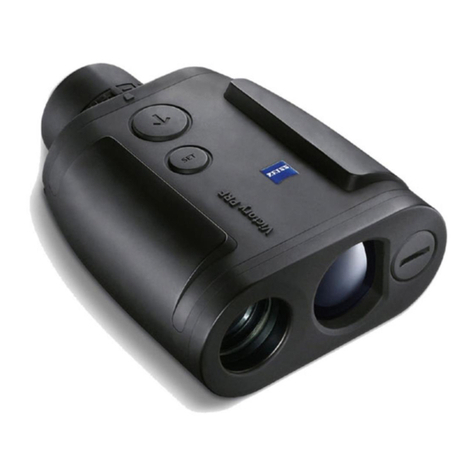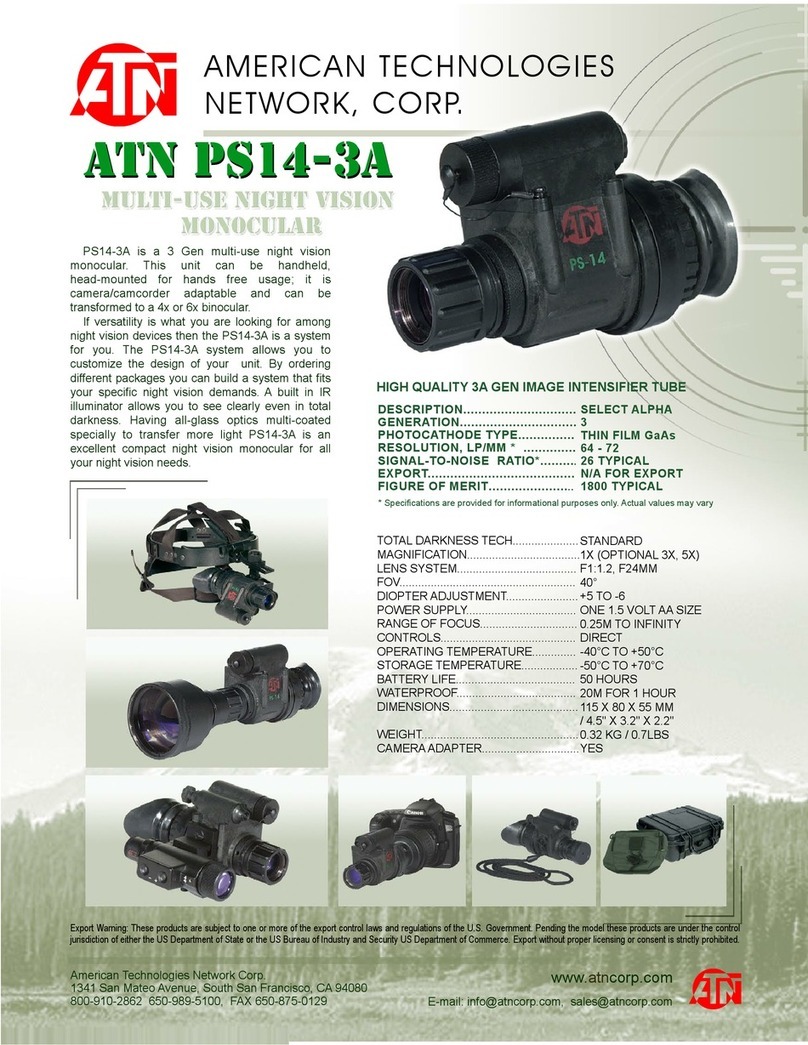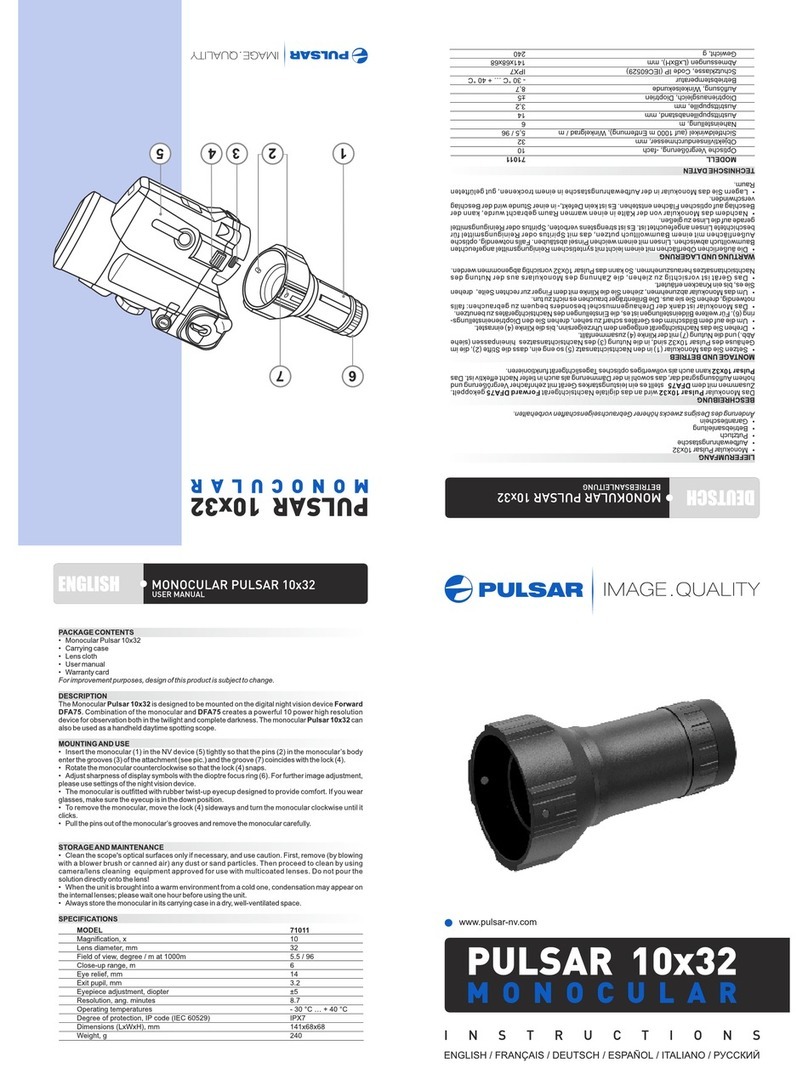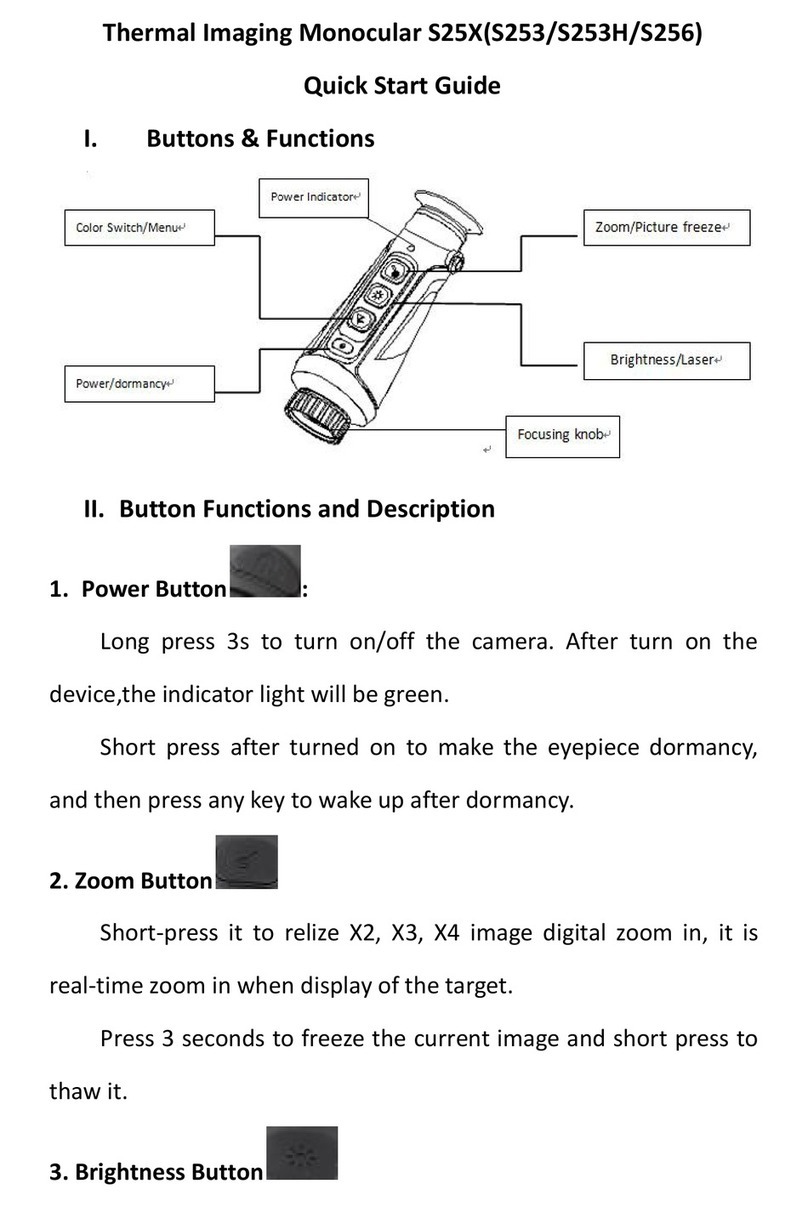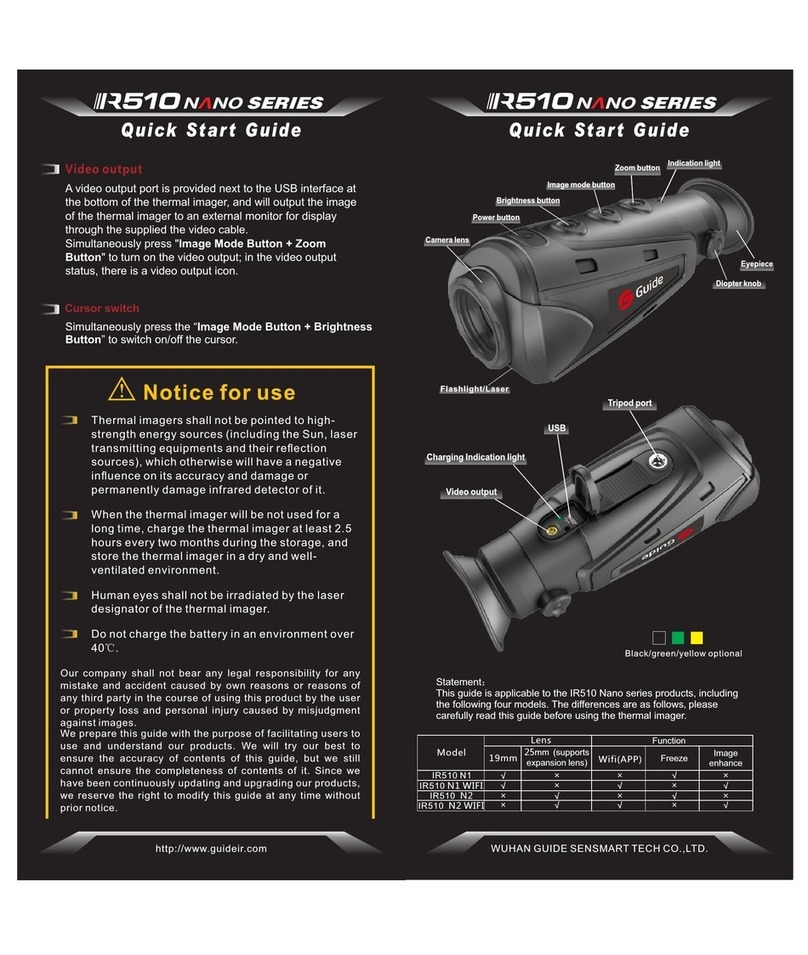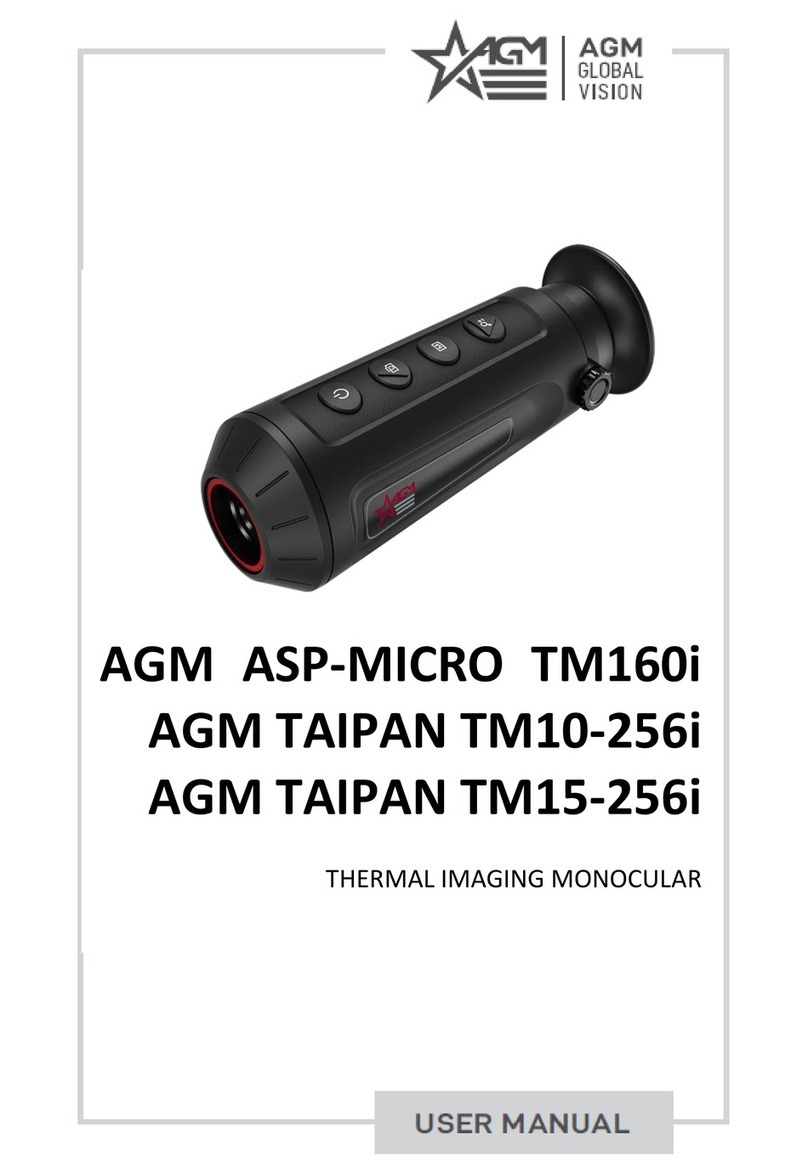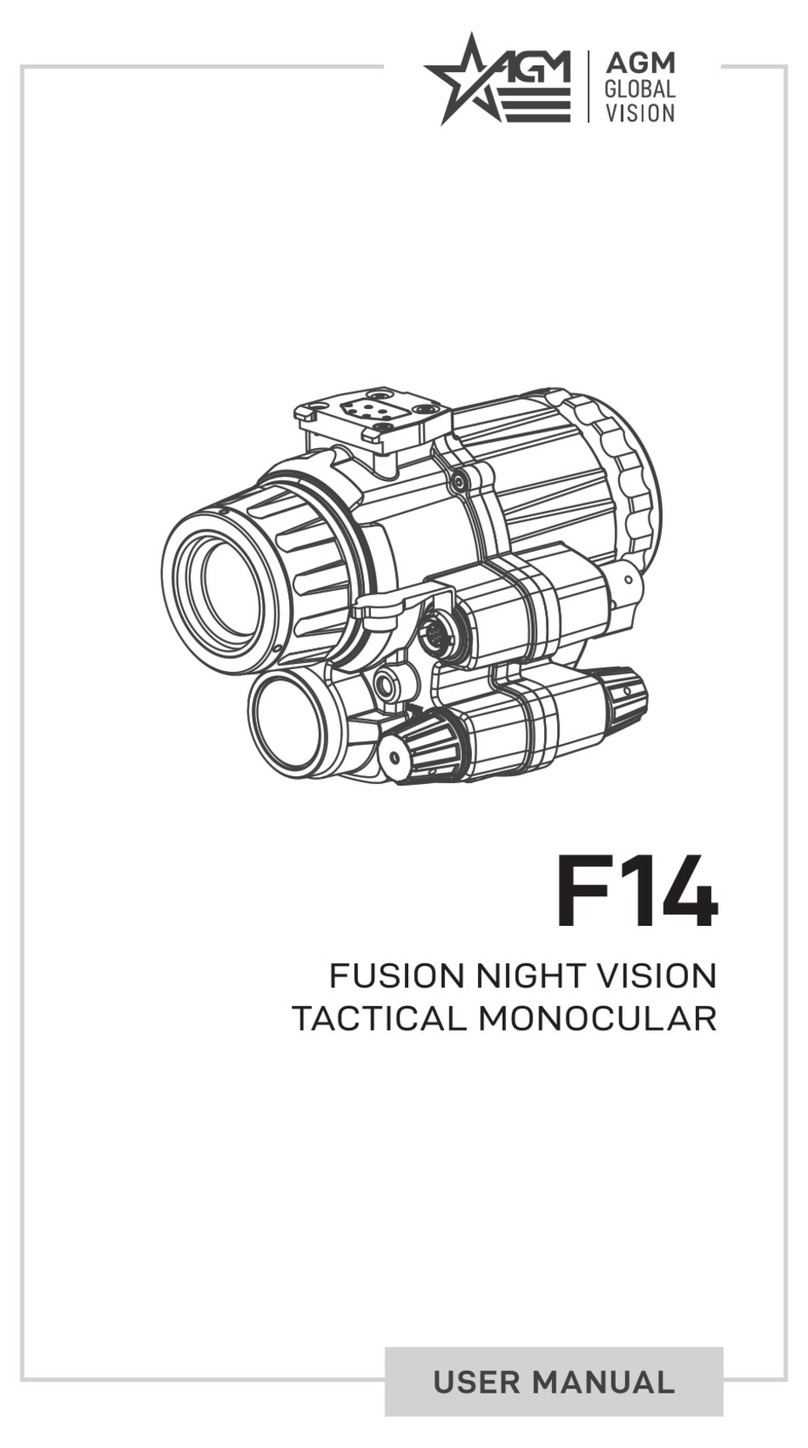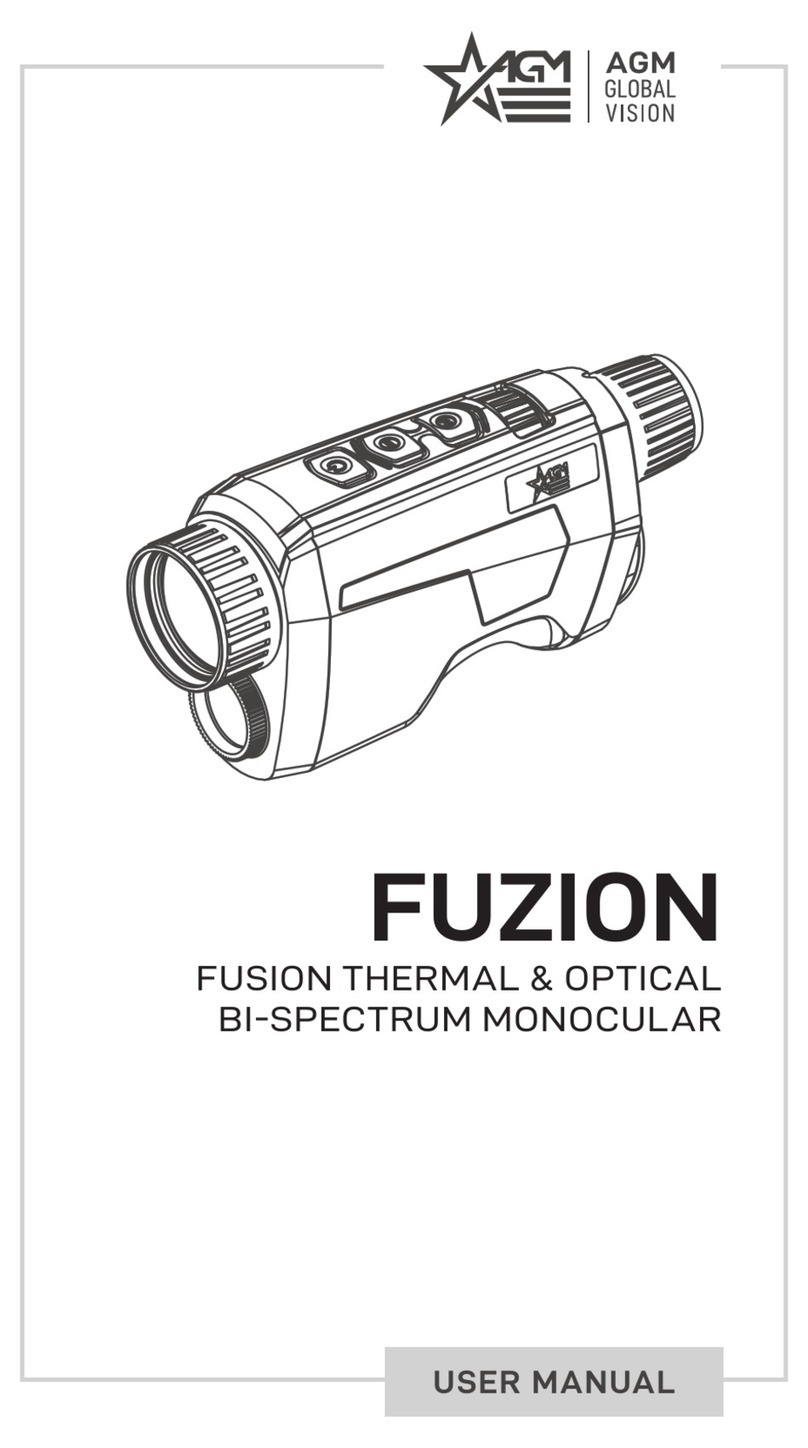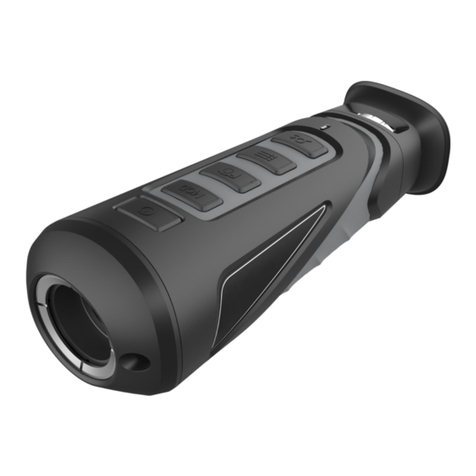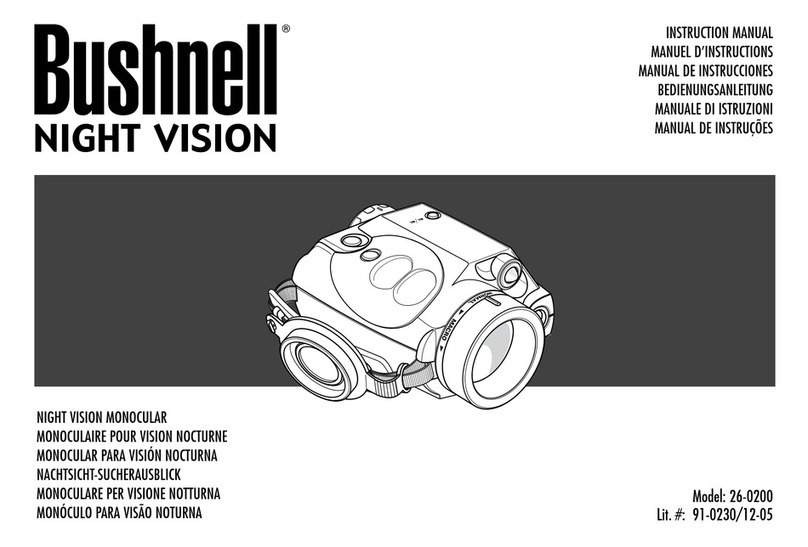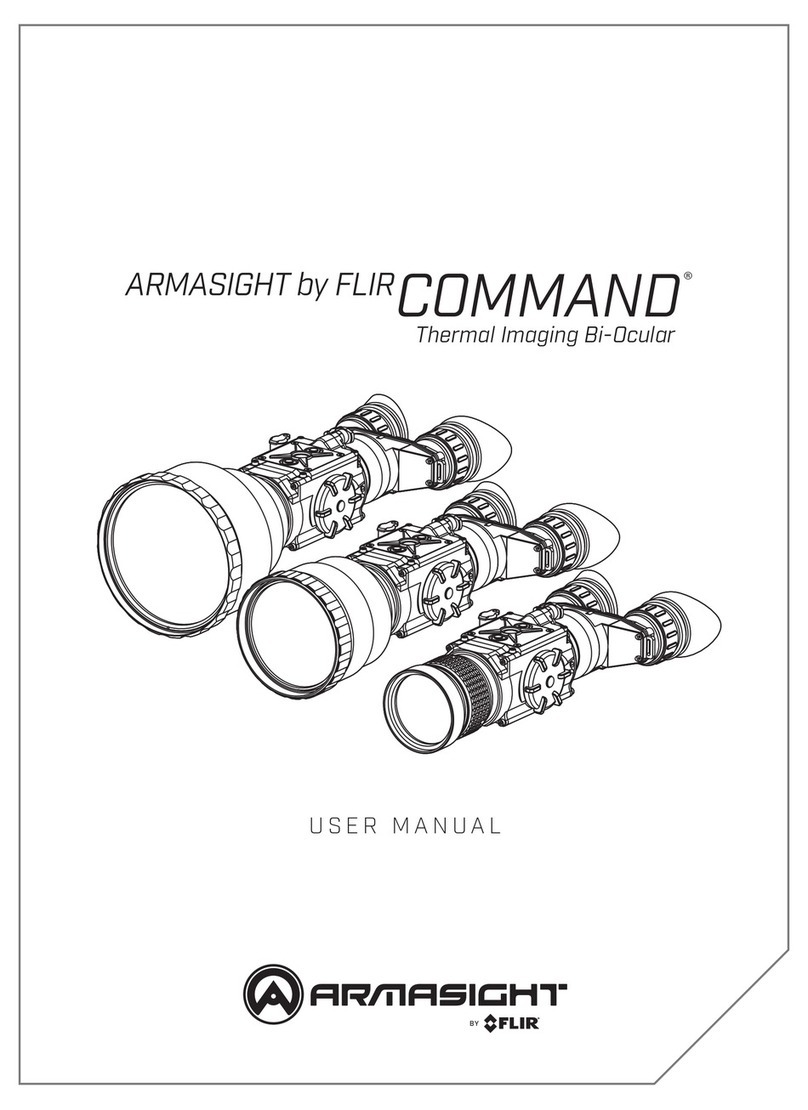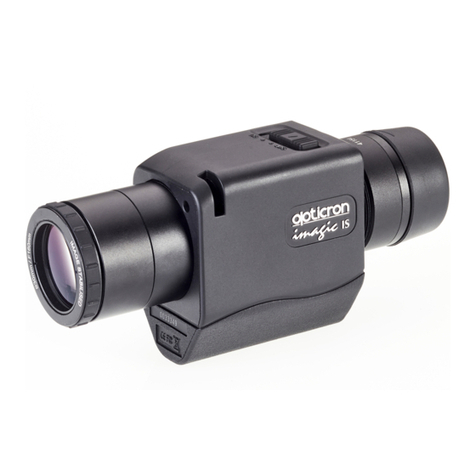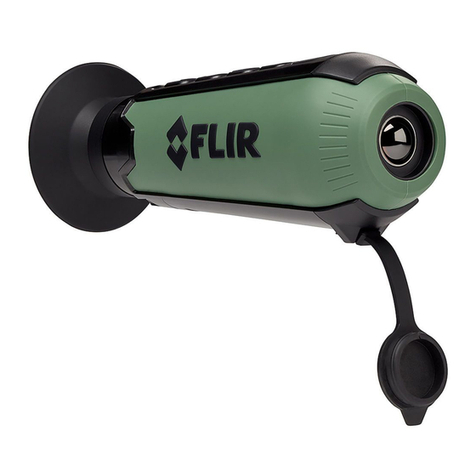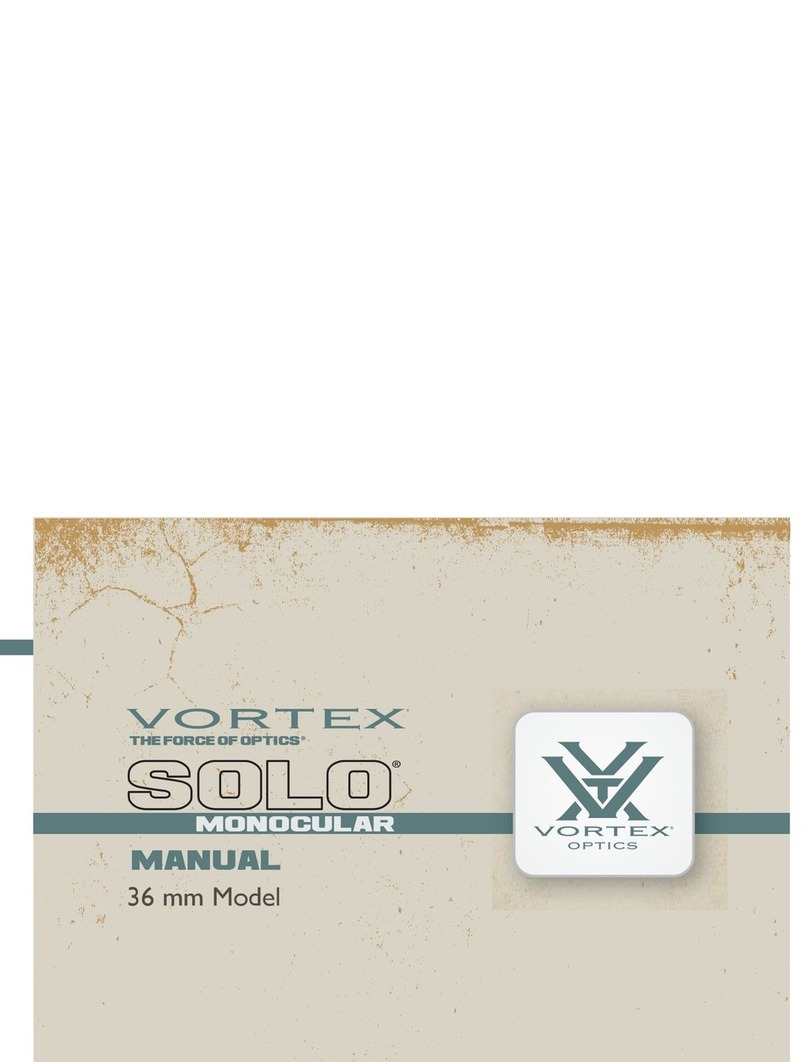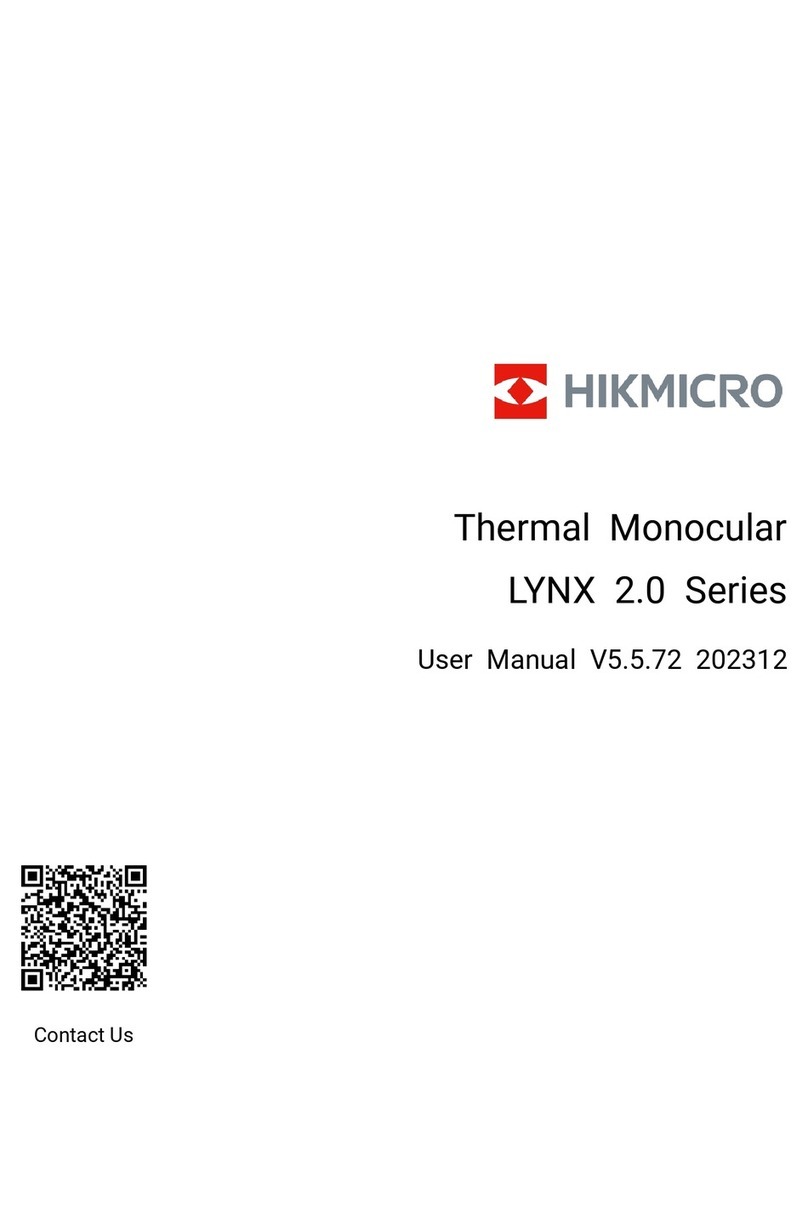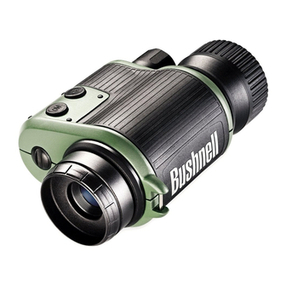
9PVS-14 USER MANUAL
A. MONOCULAR
The monocular (see Figure 1-1) consists of various components: an objective lens, an image
intensifier (not shown), an eyepiece lens, and a battery cap.
The monocular also uses the accessories listed below:
B. DEMIST SHIELD
The demist shield can be used to prevent the eyepiece lenses from becoming fogged.
C. SACRIFICIAL WINDOW
A replaceable sacrificial window is provided and can be used to protect the objective lens during
operation in adverse conditions.
D. HEAD MOUNT
The head mount secures the monocular to the operator’s head, providing freehand support for
use with a weapon, protective mask, or other purposes in which freehand operation is needed. It
is adjustable and cushioned for maximum comfort. The Large (thin) brow pad comes attached to
the head mount and should be used by physically larger individuals; the Small (thick) and Medium
brow pads are stored in the carrying case and may be more appropriate for users who are of small
or average build.
E. HEAD MOUNT/HELMET MOUNT ADAPTER
The head mount/helmet mount adapter is attached to the monocular. It allows the user to mount
the device in front of either eye.
F. CARRYING CASE
The provided textile carrying case can be used to protect or transport the monocular, head mount,
battery, and accessories. It comes with two slide keepers that can be attached to a belt, as well
as three D-rings that can be used to strap the device to your leg or shoulder. The carrying case is
also equipped with a strap that can be attached to the two D-rings on the back of the carrying case.
G. PASGT HELMET MOUNT (P/N: 6103PHM1)
The PASGT helmet mount secures the monocular to the Personal Armor System Ground Troops
(PASGT) helmet, allowing freehand support for use with a weapon, protective mask, or other
purposes in which freehand operation is necessary.
H. MICH HELMET MOUNT (P/N: 6103MHM1)
The MICH helmet mount secures the monocular to the MICH helmet, allowing freehand support
for use with a weapon, protective mask, or other purposes in which freehand operation is required.
I. WEAPON MOUNT (NSN: 5340-01-446-8588)
The weapon mount adapts the monocular to the receiver rail (as configured for the modular
weapon system kit).
J. COMPASS (NSN: 5855-01-381-6052)
The compass allows the operator to see azimuth readings in the monocular.
K. SHUTTERED EYEGUARD (NSN: 6650-01-444-1229)
Prevents light from being emitted by eyepiece. If the user’s face is illuminated, they become visible
to others in the field, and their position becomes compromised.
L. 3x AFOCAL MAGNIFIER LENS ASSEMBLY (P/N: 61023XA1)
The 3x magnifier lens assembly can be added to the monocular to extend the operator’s range of
observation.
